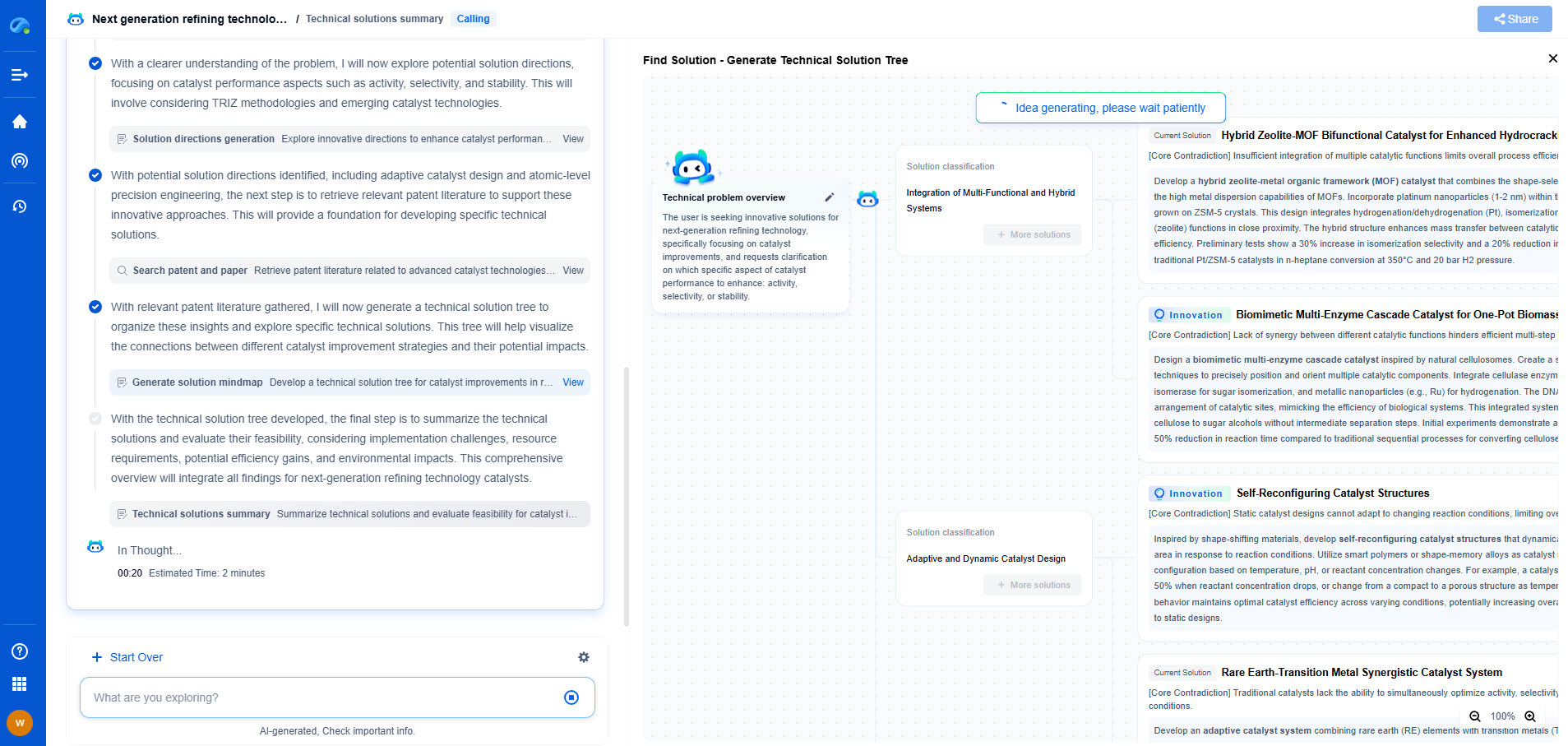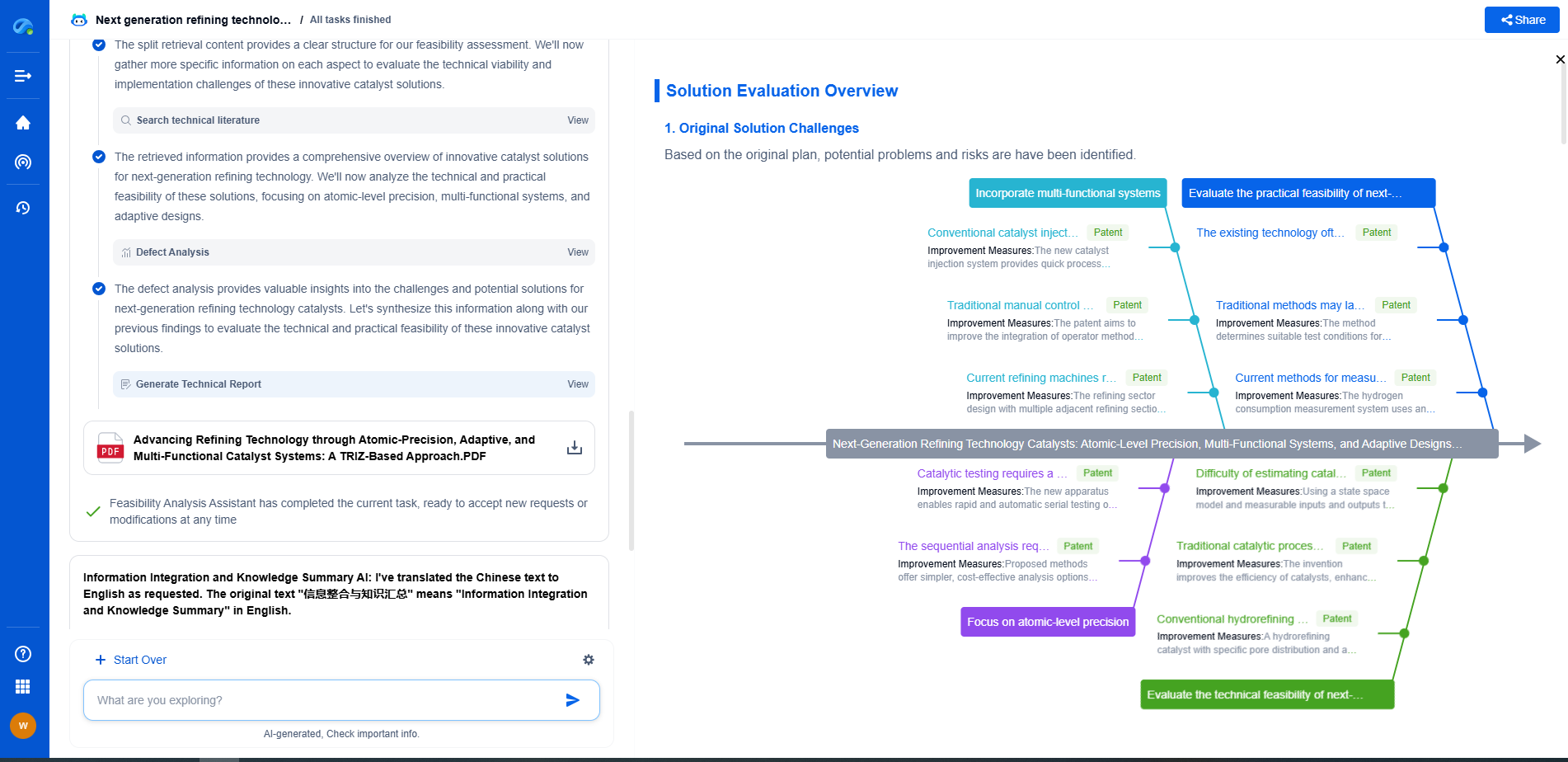Response Time Showdown: MEMS vs Piezoresistive Pressure Sensors
JUL 14, 2025 |
In today's fast-paced world of technology, speed and precision are paramount. Whether it's in automotive systems, industrial machinery, or consumer electronics, the ability to quickly and accurately measure pressure can be the difference between optimal performance and potential failure. In this context, pressure sensors play a critical role. Two of the most widely used types of pressure sensors are MEMS (Micro-Electro-Mechanical Systems) sensors and piezoresistive sensors. This article will delve into the response times of these two sensor types, providing a comparative analysis to help you understand which might be best suited for your application.
Understanding MEMS Pressure Sensors
MEMS pressure sensors are an advanced technology that integrates mechanical and electrical components on a microscopic scale. These sensors work by converting physical pressure into an electrical signal using the principles of microfabrication. MEMS sensors are highly regarded for their small size, low cost, and ability to be integrated with other electronic components. They are particularly popular in consumer electronics due to their compact form and versatility.
When it comes to response time, MEMS sensors are generally fast, thanks to their small size and low mass. The micromechanical structures in MEMS sensors can quickly react to changes in pressure, making them suitable for applications that require rapid data acquisition and processing.
Exploring Piezoresistive Pressure Sensors
Piezoresistive pressure sensors, on the other hand, operate on the principle of piezoresistance. This phenomenon involves the change in electrical resistance of a material when mechanical stress is applied. Typically made from semiconductor materials like silicon, these sensors are known for their high sensitivity and wide dynamic range.
Piezoresistive sensors have been a staple in various industries for decades. They are valued for their robustness, accuracy, and ability to function well under a wide range of temperatures and environmental conditions. However, when it comes to response time, piezoresistive sensors may not always match the speed of MEMS sensors. This is primarily because they involve more extensive physical deformation to produce an electrical signal, which can slightly delay the response.
Comparative Analysis: Response Time
When evaluating response times, a crucial metric for performance is the time it takes for a sensor to react to changes in pressure and stabilize at a new measurement. MEMS sensors typically boast a quicker response time due to their micro-scale structures, which allow for rapid mechanical movement and signal processing. This makes them ideal for applications such as automotive airbag systems, where milliseconds can make a significant difference.
In contrast, piezoresistive sensors, while offering superior accuracy and stability, might have a slightly longer response time. This delay is due to the inherent design of these sensors, which requires a larger stress-induced change to alter the resistance and produce a measurable output. Thus, piezoresistive sensors are often favored in applications where precision and stability are more critical than ultra-fast response times, such as in medical devices or industrial pressure monitoring.
Choosing the Right Sensor for Your Application
The decision between MEMS and piezoresistive pressure sensors ultimately depends on the specific requirements of your application. If your primary concern is rapid response time and integration into compact systems, MEMS sensors may be the way to go. They are well-suited for dynamic environments where quick pressure changes are common.
However, if your application demands high accuracy, stability over a range of temperatures, and reliability in harsh conditions, piezoresistive sensors might be more appropriate. While they may not react as quickly as MEMS sensors, their ability to provide precise and consistent readings can be invaluable in critical applications.
Conclusion
In the showdown between MEMS and piezoresistive pressure sensors, each has its strengths and ideal use cases. MEMS sensors excel in situations requiring quick response times and integration into small systems, while piezoresistive sensors offer unparalleled accuracy and robustness. Understanding the nuances of these sensors will enable you to make an informed decision, ensuring optimal performance and reliability in your specific application.
From 5G NR to SDN and quantum-safe encryption, the digital communication landscape is evolving faster than ever. For R&D teams and IP professionals, tracking protocol shifts, understanding standards like 3GPP and IEEE 802, and monitoring the global patent race are now mission-critical.
Patsnap Eureka, our intelligent AI assistant built for R&D professionals in high-tech sectors, empowers you with real-time expert-level analysis, technology roadmap exploration, and strategic mapping of core patents—all within a seamless, user-friendly interface.
📡 Experience Patsnap Eureka today and unlock next-gen insights into digital communication infrastructure, before your competitors do.
- R&D
- Intellectual Property
- Life Sciences
- Materials
- Tech Scout
- Unparalleled Data Quality
- Higher Quality Content
- 60% Fewer Hallucinations
Browse by: Latest US Patents, China's latest patents, Technical Efficacy Thesaurus, Application Domain, Technology Topic, Popular Technical Reports.
© 2025 PatSnap. All rights reserved.Legal|Privacy policy|Modern Slavery Act Transparency Statement|Sitemap|About US| Contact US: help@patsnap.com

